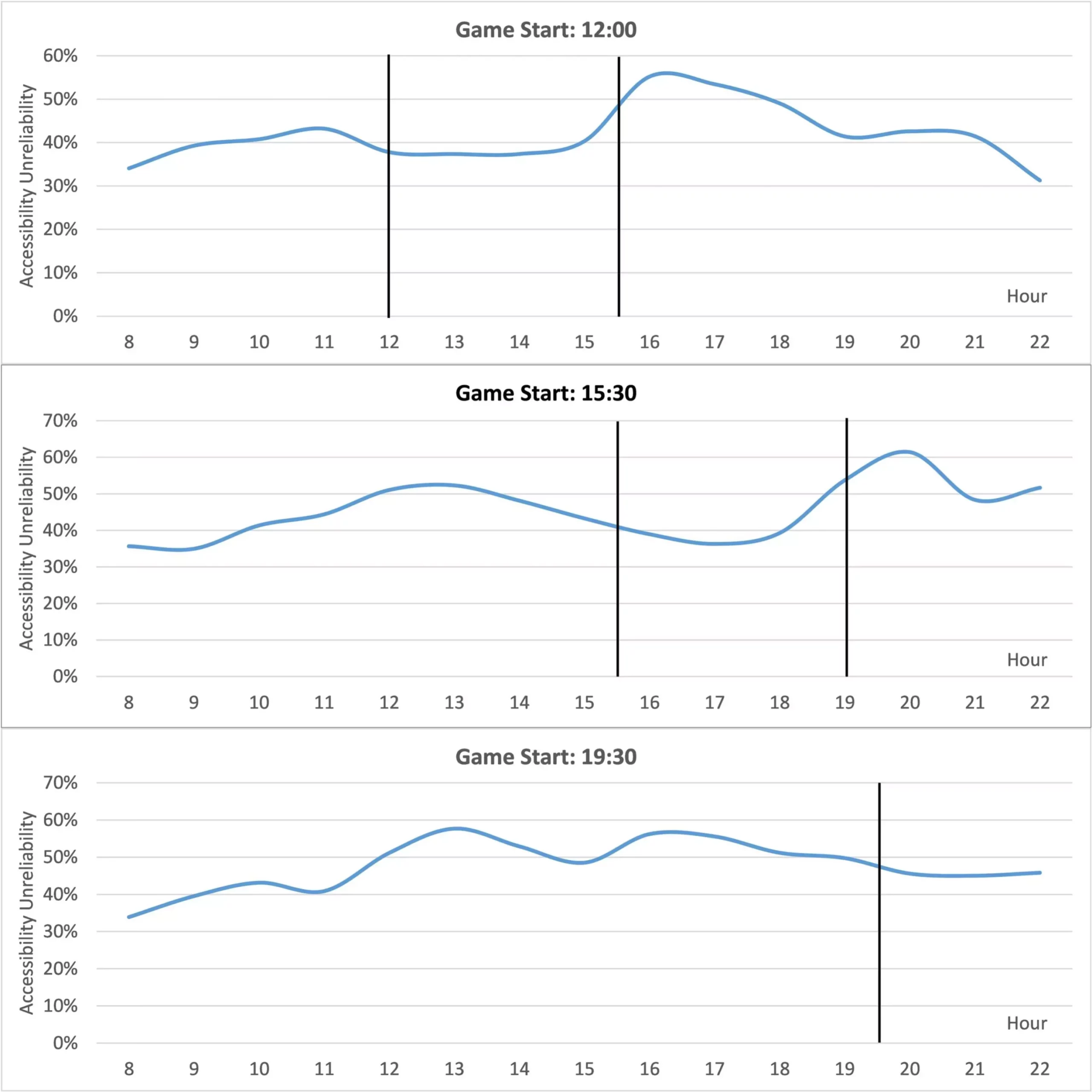Technology has enabled scientists to gain insights into how major sporting events can impact public transportation in a city. A recent case study conducted in Columbus, Ohio, examined the disruptions caused by home football games at Ohio State University. The findings revealed that bus service throughout the city was significantly less reliable for more than 7 hours on game days, affecting not only those traveling near the university but also commuters traversing different parts of the city.
The case study, led by researcher Luyu Liu, analyzed bus service provided by the Central Ohio Transit Authority (COTA). The researchers compared data from 13 home football game days in 2018 and 2019 with away game days and non-game days. The study found that disruptions before the game lasted longer but were not as severe, while post-game impacts had a shorter duration but were more disruptive. This can be attributed to the fact that people arrive at games over an extended period, but almost all leave immediately after the game ends.
The study revealed that bus service unreliability was 8.7% higher than average before the game peak and 24.5% higher after the game peak. The core disruption period, lasting about 7 hours between the two peaks, had the most significant impact on transit reliability. However, the researchers noted that transit service was still affected to some extent before and after this core disruption period.
While this study focused on the impact of football games on bus service, the researchers believe that the measures developed can be applied to analyze any disruption to regular traffic flow. These findings have the potential to be useful in assessing various situations such as crashes on interstates, bridge collapses, construction delays, and large events. The study highlights how disruptions can propagate through an entire transportation system in a city, emphasizing the importance of preparedness for transportation planners.
Apart from the study’s focus on football games, the researchers also analyzed the effects of the COVID-19 pandemic on long-term public transit accessibility in Columbus. The findings demonstrated mixed results. In the early stages of the pandemic, reliability actually increased as overall traffic declined, allowing buses to operate more freely. However, in May 2020, the transit authority implemented major schedule changes to adapt to plummeting ridership and financial difficulties.
The downtown area, which experienced the fewest service cuts and accounts for the highest ridership, had comparatively less loss of accessibility and reliability. On the other hand, some parts of the city, particularly the northeast area, have yet to recover their pre-pandemic service levels. This discrepancy poses challenges for individuals relying on public transit for their everyday transportation needs, such as commuting to work, medical appointments, and shopping.
Considering the potential challenges posed by climate change, pandemics, and other disruptions, transit systems must find ways to enhance their reliability and accessibility. The researchers hope that these findings will prompt officials to invest in building and improving infrastructure for public transit. Understanding the vulnerability of different parts of a city’s transportation system to disruption enables transportation planners to take proactive measures and mitigate the impact on commuters.
The study conducted in Columbus sheds light on the disruptive effects of major sporting events on public transportation. It emphasizes the necessity for transportation planners to anticipate and address potential disruptions, regardless of the event causing them. By implementing measures to enhance reliability and accessibility, cities can better serve their residents and mitigate the challenges posed by events like football games and other unforeseen circumstances.


Leave a Reply